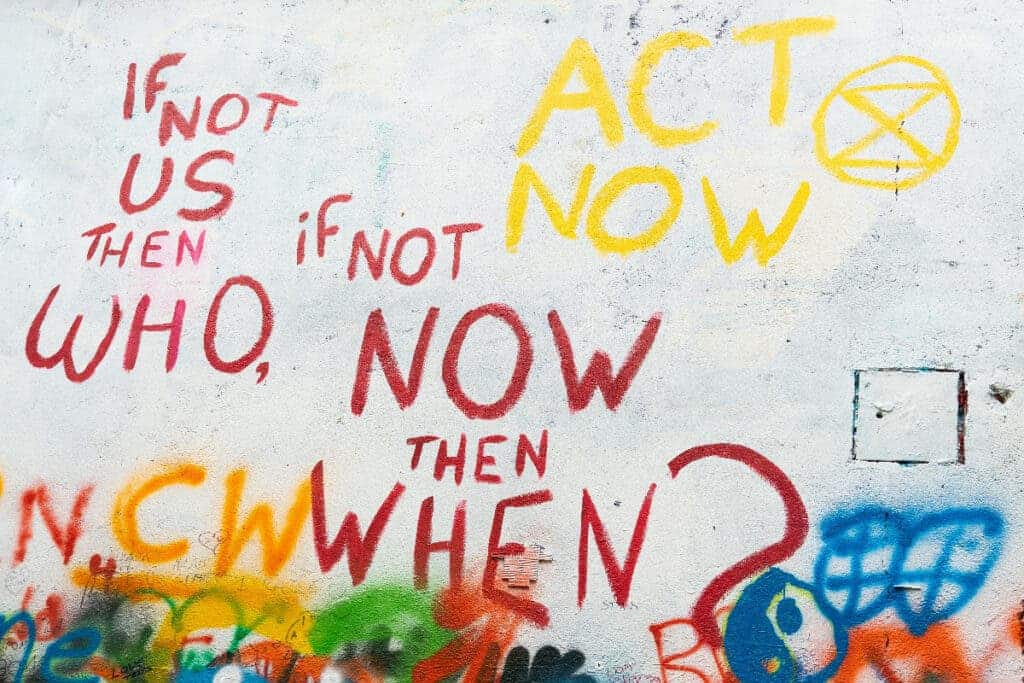Minority neighborhoods are often clustered around industrial sites, ports, truck routes, and military bases — all of which can be sources of toxic exposure. This phenomenon, part of a broader problem called environmental racism, is also impacting black active-duty service members.

According to the Department of Defense, there are currently 679 military bases across the United States heavily contaminated with PFAS, a group of toxic substances commonly known as “forever chemicals.” The source of these dangerous chemicals is the use of AFFF, a fire suppressant, by military firefighters and trainees. It contains between 50% and 98% PFAS, which makes it extremely detrimental to the environment, as some of these substances take up to a thousand years to break down.
However, “forever chemicals” are far from being the only toxic agents lurking on military bases. As a consequence of the improper use and disposal of solvents by military personnel, these installations have also become polluted with industrial solvents such as perchloroethylene, vinyl chloride, trichloroethylene, and benzene. A very good example in this regard is Camp Lejeune in Jacksonville, North Carolina — between 1953 and 1987, approximately one million people experienced severe toxic exposure on the military base.
Although contamination at Camp Lejeune had been occurring since 1953, it was only in 1982 that the Marine Corps found volatile organic compounds polluting multiple installation sites. Shortly after this unsettling discovery, the perchloroethylene level was found to be 43 times higher than the safe limit, while the trichloroethylene level was 280 times greater than the maximum limit. As for PFAS, their concentration in the environment of Camp Lejeune eclipsed the safe limit by over 2,450 times.
This hazardous concoction of chemicals was a health threat to anyone who spent more than one month at the military base. As a result of toxic exposure, numerous veterans, family members, and civilians now struggle with terrible health problems, including lung cancer, Parkinson’s disease, ovarian cancer, aplastic anemia, bladder cancer, renal toxicity, and leukemia. Still, it is extremely important to acknowledge the impact of toxic exposure on black service members at Camp Lejeune and nearby communities.
Black veterans are more likely to become ill due to military toxic exposure
In 1941, when the country was preparing for World War II, the US military was in desperate need of recruits, but there was a problem – it could not hire black individuals, as racism and discrimination were alive and well at the time. Still, civil rights activists were demanding a change, and soon, the first African-American labor union was established by Asa Philip Randolph. This made it possible for the military to recruit over 20,000 black individuals to serve as Marines and Sailors in the upcoming conflict. Over the course of WWII, African-American enlistment was at an all-time high, with more than 1 million serving in the armed forces, but the U.S. military was still entirely segregated. For instance, the marines had no black people enlisted in combat infantry. They underwent training at a racially segregated facility, Montford Point, which is part of Camp Lejeune today.
Nevertheless, the living conditions at this military base were awful. In the absence of a white service member, black Marines and Sailors were not even allowed to enter Camp Lejeune. Furthermore, these service members were enduring racism on a regular basis, despite the equally hard work they invested in their military training. Montford Point was used for approximately seven years before the federal government finally prohibited racial segregation. Even though this military installation was not part of Camp Lejeune initially, it was located close to it, and black service members also experienced toxic exposure.
Today, anyone can enlist in the military, regardless of their race, yet black individuals still represent a minority among service members. Only 19% of all military personnel are black. Even fewer black service members are officers – just 9%. The Pentagon and the Veterans Affairs Department admit that black service members are less likely to become officers, making them more prone to sustaining injuries while on active duty than their white colleagues. One of the risks black service members with low ranks face is toxic exposure, as, unlike most officers, generals, and lieutenants, they have to live on contaminated military bases.
Environmental racism among people of color living near contaminated military bases
The main causes of environmental racism include the unavailability of affordable land, poverty, historical discrimination, and lack of political power to fight corporations. As a result, people of color usually have no other option than to inhabit extremely polluted neighborhoods near military bases and other sources of contamination. While both race and low income play a crucial role in environmental racism, plenty of evidence shows that race is typically the most reliable indicator of proximity to pollution than income alone.
According to the Environmental Protection Agency, people of color face a 28% greater health burden than the general population. Moreover, black families inhale 56% more polluted air than they generate, whereas Latinos breathe in 63% more pollution. Conversely, white people inhale 17% less toxic air than they release. This is a clear, unequivocal example of environmental racism. Currently, there are 170,000 individuals living at Camp Lejeune, which is still contaminated, although to a lesser extent.

The population of Jacksonville is approximately 74,313, and half of these people inhabit Camp Lejeune. In other words, 37,156 civilians experience toxic exposure and those living near the military installation. People of color live in close proximity to almost every contaminated military base in the United States, which increases their risk of coming to struggle with life-threatening health problems. To make matters worse, between 2016 and 2020, the military clandestinely burnt more than 20 pounds of AFFF waste, despite the lack of scientific evidence that PFAS can be destroyed by incineration.
New York, Ohio, and Arkansas were the states where the largest amounts of AFFF were burnt. In the first state, toxic waste may have been incinerated near Plattsburgh Air Force Base, Hancock
Field Air National Guard Base, and Griffiss Air Force Base. This reckless and negligent process in Ohio may have occurred close to Rickenbacker Air Force Base. In the last state, AFFF may have been burnt near Eaker Air Force Base. These military installations are already contaminated with PFAS and other toxic chemicals.
How we can fight environmental racism
Environmental racism is just a facet of the greater picture of systemic racism, which must be relentlessly fought to create a fair society for everyone. The most effective tools to achieve environmental justice include self-education about the disproportionate hazards affecting underprivileged communities, providing a platform for people of color impacted by toxic exposure where they can express their opinion and propose solutions to end this phenomenon, and holding businesses that generate pollution responsible for their unethical activities.
Regardless of the poverty level, black children are two to six times more likely to have a high lead concentration in their blood. If they live near pollution sources, the lead level in their blood will become dangerous. The presence of this heavy metal in the body may cause neurotoxicity, kidney damage, and even death.
Fighting environmental racism means doing what is morally right to minimize the health burden created by toxic exposure among vulnerable communities — even if we are just becoming aware of such problems. Our active involvement can eventually bring about safe living conditions for people of color and decrease the illnesses they face due to environmental toxic exposure and other such consequences. This is a fight that’s well worth fighting.
This is an article by Jonathan Sharp, Chief Financial Officer at Environmental Litigation Group, P.C. The law firm, headquartered in Birmingham, Alabama, specializes in toxic exposure. His main responsibilities are financial analysis and case evaluation. By virtue of his experience in assessing and reviewing hundreds of toxic exposure cases, Jonathan Sharp has gained valuable knowledge about the impact of hazardous environmental contaminants on human health, the dire situation of contaminated military bases, and how everyone can fight environmental racism.


